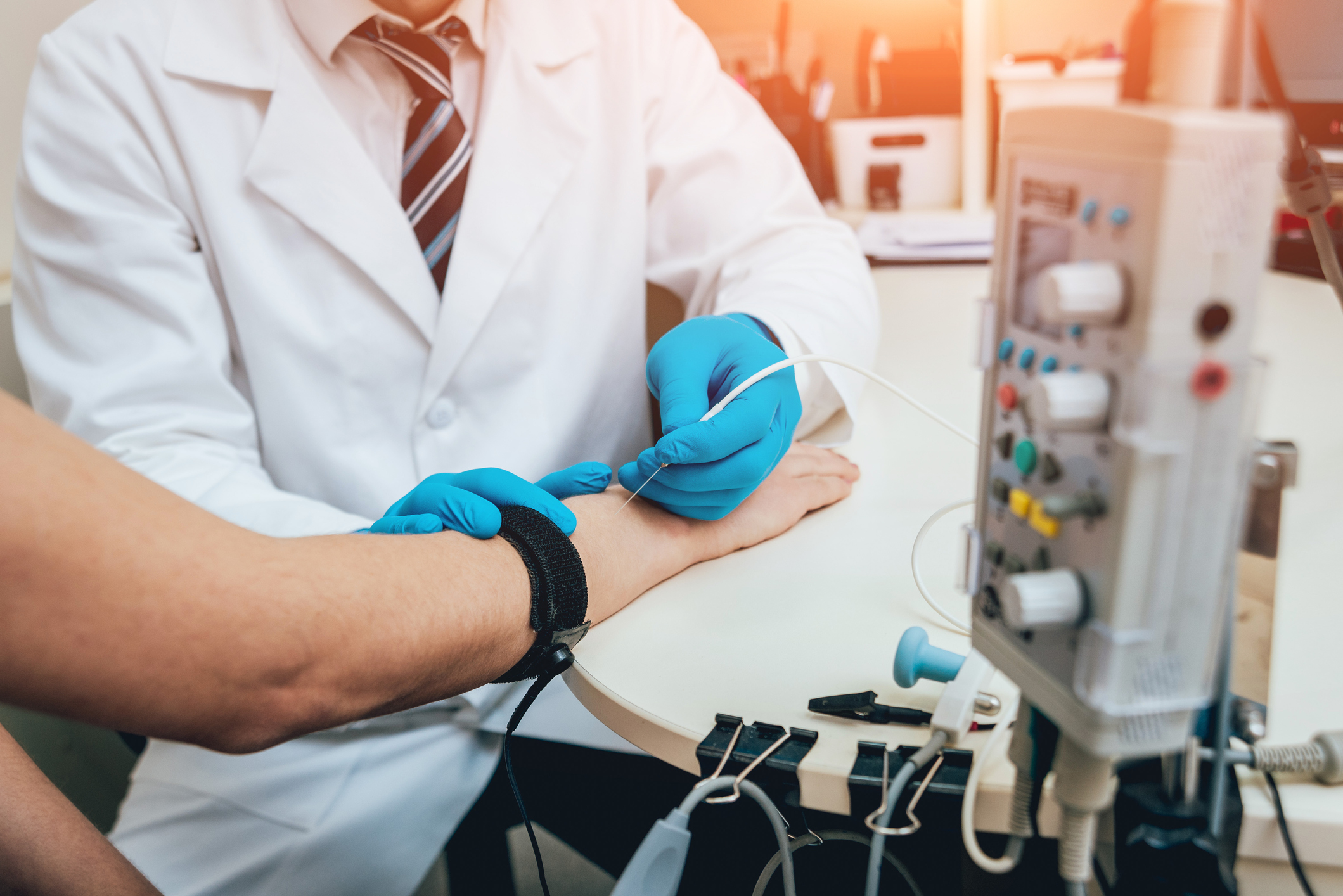An electromyogram (EMG) is a test that measures and records the electrical activity produced by skeletal muscles. The recording of this activity typically involves using an EMG machine to detect the electric signals that “muscle cells” send to one another and then amplify them. A doctor may use this reading to help diagnose injury or disease. An electromyogram is usually used to find the source of neuromuscular disorders and injuries. If you are experiencing nerve pain or neuropathy, you may need to visit a New Jersey EMG specialist to get this test.
What to Expect
During an electromyogram, a doctor inserts a needle into the muscle and stitches the electrode part of the needle to your skin. The test begins when they send a tiny electric current through the needle. There will be no reaction as the electrical current passes through your muscle tissue if there’s no problem with your nerves or muscles. However, if your muscle is signaling a problem, the needle will pick up those signals, and they’ll show on the machine’s readout. The doctor looks at the graph and studies its shape and amplitude. With this information, he can find out where and how severe the nerve damage, or neuromuscular disorder is.
Why Do You Need It?
An electromyogram is an extremely valuable tool for doctors because it can detect problems that would otherwise be difficult to diagnose. For instance, the test can show the source of nerve damage that’s commonly associated with carpal tunnel syndrome and other similar conditions. It can also help diagnose diseases like amyotrophic lateral sclerosis (ALS), which produces characteristic changes in an EMG’s results. If your doctor suspects that you have any of these conditions, they may order an electromyogram to confirm the diagnosis.
What Conditions Can It Diagnose?
An electromyogram can help diagnose many neuromuscular problems. However, it’s most commonly used to pinpoint the source of nerve damage and other symptoms associated with:
- Carpal tunnel syndrome
- Muscle weakness
- Muscle disorders such as myasthenia gravis and muscular dystrophy
- Spinal cord problems like herniated discs and spinal stenosis (narrowing of the spine)
As with any test, an electromyogram has its limits. It cannot diagnose all neuromuscular conditions, and sometimes your doctor may have to use a nerve conduction study instead. This test is similar to an electromyogram, but it measures the speed at which electrical signals travel along your nerves instead of monitoring how your muscles react to electric currents.
How To Prepare for the Procedure
Before your doctor gives you an electromyogram, they will inform you about the test, including what you can expect to happen during it. They may also ask if you’re taking any medications that could affect the test results. If so, they’ll tell you how long to stop taking them before coming in for your appointment. Your doctor may recommend that you take a tranquilizer or another medication to reduce stress and relax your muscles before the test begins.
In summary, an EMG is a test that measures the electrical activity produced by skeletal muscles. The doctor sends a tiny electrical current through a needle attached to your skin. You may need it to diagnose conditions that affect the neuromuscular system. Your doctor will guide you on how to prepare for the test.











